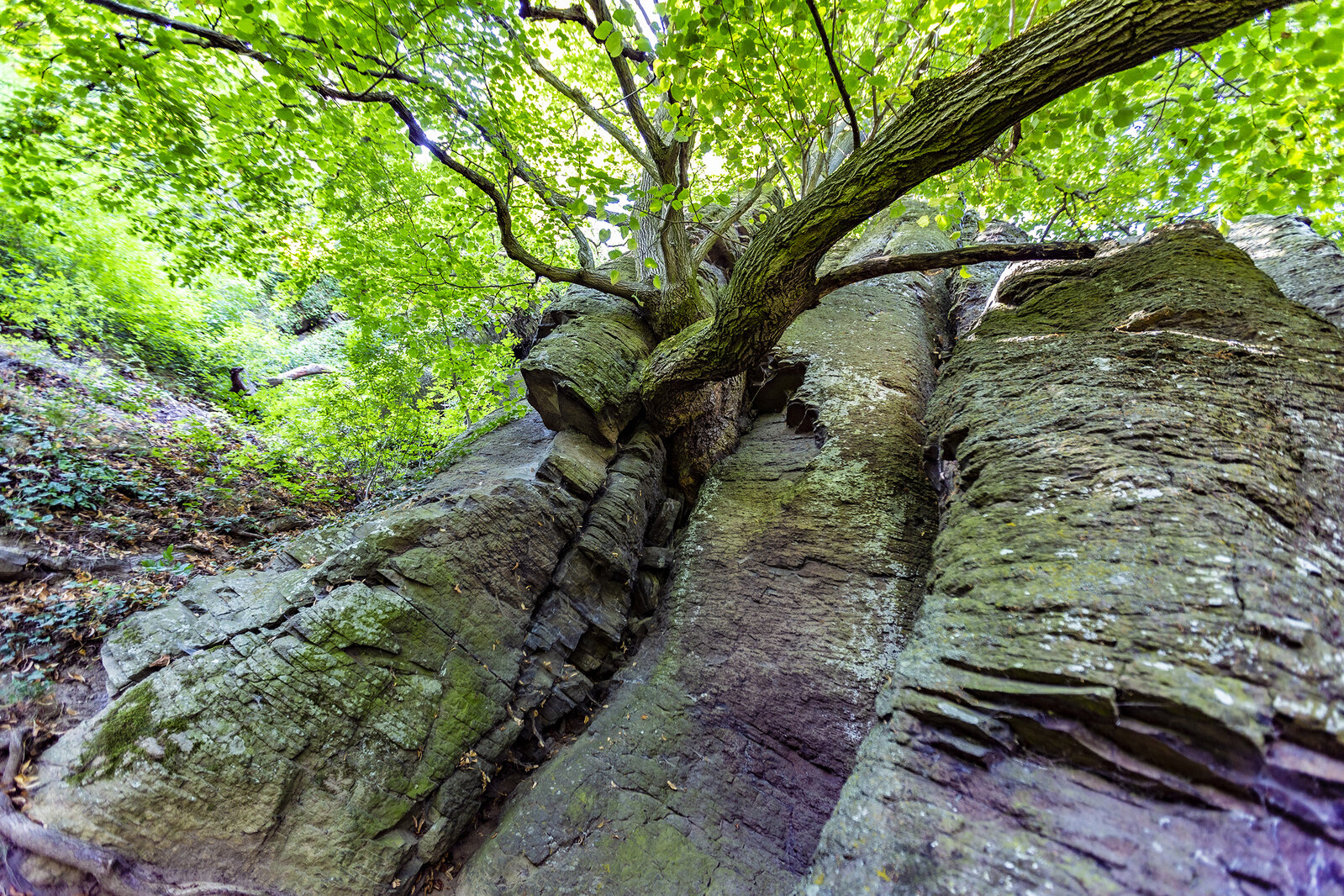Basalt Piles on Badacsony, Red Stone in Almádi - Rocks Under our Feet at Lake Balaton
White limestone, red stone, basalt: we see them countless times when we go hiking around Lake Balaton, yet we don't know much about them. However, the monadnocks tell us about the turbulent history of basalt mining, and the wines and buildings we see around Lake Balaton are also the product of the rocks that crunched under our feet. So let's take our imaginary hiking boots and head to Badacsony, Hegyestű and the Füred-Csopak wine region to discover these extraordinary formations.

Photo: VEB2023
At wine tastings - especially when you're in the Balaton Uplands - you'll often hear, "You can taste the minerality in the wine, can't you?". So what should we think about when this is said? Wine making is fundamentally determined by the rocks of the production area - they shape the character of each wine as much as the climate or the grape variety, for example.
For example, in the Kál basin or on the monadnocks like Badacsony or Szent György Hill, we are most likely to find volcanic wines, as these were once volcanoes and the grapes ripening here typically receive plenty of basalt, which gives the wines fresh acidity and pleasant mineral flavours.
What is there to know about basalt?
This is the type of rock that is most typical of Lake Balaton. Basalt hills, basalt cones, basalt organs: these are the terms you may hear or read all the time when you are hiking on one of the monadnocks. Basalt is a type of rock formed by the eruption of lava and is found even outside the Earth, having been discovered on the Moon and on Mars.
Basalt mining in Hungary began in the 19th and 20th centuries, with small mining holes forming in each of the monadnocks of Lake Balaton, and large parts of the hills were literally carried away by the miners. This is how, for example, Hegyestű, Haláp and Badacsony became stump mountains - and not in a small way either. Basalt was used in large quantities in the building industry: in Badacsony, but also in Szigliget and in several places in the Balaton Upland, you can see houses built of basalt stones, and it was also used for road construction and railway tracks.
Next to basalt, white limestone is the second most talked about rock
In the Balatonfüred microregion, but also in the Kál basin, Gyenesdiás and even around Nemesvámos, you can find plenty of such stones. The most exciting way to get to know the limestone is to visit the Száka Hill quarry in Balatonfüred, where it was once quarried, but nowadays the place can only be explored as an educational trail. It's worth observing the limestone's slab-like appearance: the layers look like works of art.
In addition to white limestone, let's not forget redstone!
This type of stone, typical of the Balatonalmádi microregion, was not only used by the building industry in the 12th and 13th centuries, but later also found its way into the arts. In Balatonalmádi and its surroundings, but also all over the Balaton highlands, it is not only the built environment that contains large quantities of redstone, but there are also countless sculptures. Even today, redstone carvers and redstone sculptors still live in the area, and although this is a very demanding art form - redstone is extremely difficult to work with due to its crumbling structure - they believe that the special result is worth it.
The odd rock out: marl
This often highly shimmering rock is not composed of a single type of material, but is usually a mixture of limestone or dolomite with a little clay. You can find plenty of it in Csopak, and it's even worth a visit to the marl rock on which the St. Donatus Mansion and Winery is built.
